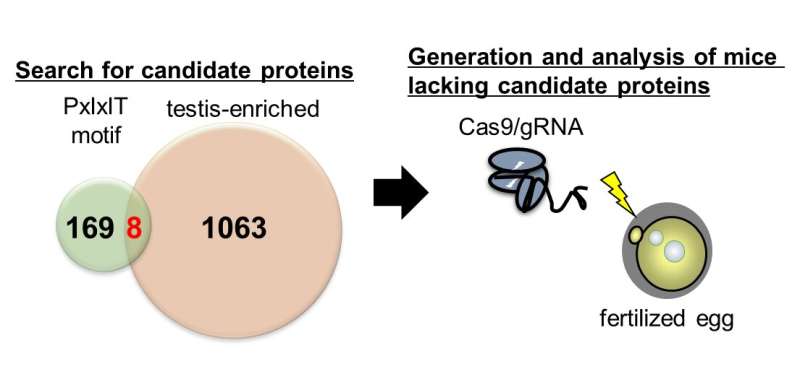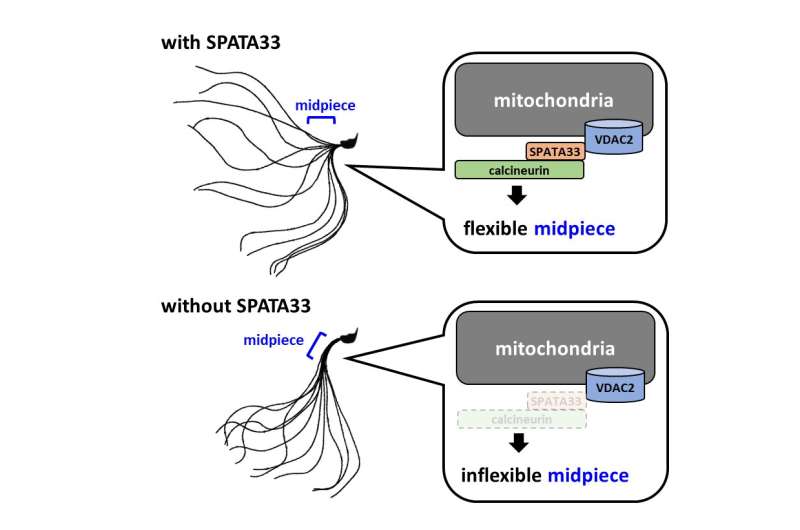Molecule regulating sperm motility discovered

About 120 million unintended pregnancies occurred each year between 2015 and 2019 worldwide. While there are oral contraceptives for women, the development of oral contraceptives for men has not been successful. Now, a team from Osaka University has used protein sequence data analysis and genome editing technology to find that SPATA33 plays an important role in sperm motility regulation, which will help develop male contraceptives.
It was previously known that calcineurin, a calcium-dependent phosphatase, plays an important role in regulating sperm motility. Calcineurin is considered a good target for male contraceptives because administration of calcineurin inhibitors to male mice causes reversible infertility in a short period of time.
"However, since calcineurin also has an important function in immunity, there is a problem that if calcineurin in immune cells is inhibited, immune function will also be suppressed. Therefore, our goal was to elucidate the mechanism that regulates the function of calcineurin specifically in the sperm," says corresponding author Masahito Ikawa.
The research group focused on the PxIxIT motif that can be found in many proteins that bind to calcineurin. From the approximately 20,000 mouse proteins, eight proteins were found which contain the PxIxIT motif and are expressed predominantly in the testis (Figure 1).
"Genome editing technology was then used to generate knockout mice for three of these proteins that had not been previously analyzed. As a result, SPATA33 knockout mice showed impaired sperm motility and fertility defects, similar to calcineurin knockout mice," explains lead author Haruhiko Miyata. "Further analysis revealed that SPATA33 regulates the localization of calcineurin. When SPATA33 is knocked out, calcineurin cannot localize to the midpiece of the sperm tail and the midpiece cannot bend, leading to impaired sperm motility (Figure 2)."

Targeting SPATA33 may lead to the development of male contraceptives that specifically inhibit calcineurin function in sperm. In addition, the mechanism by which SPATA33 controls sperm motility has been clarified in this study, adding a new perspective to the investigation and diagnosis of the cause of male infertility.
"We would like to further clarify the regulation mechanism of sperm motility by calcineurin in its entirety. We expect our findings will lead to the development of fast-acting, reversible male contraceptives and the investigation of the cause of male infertility due to decreased sperm motility," says Haruhiko Miyata.
The article, "SPATA33 localizes calcineurin to the mitochondria and regulates sperm motility in mice," was published in Proceedings of the National Academy of Sciences.
More information: SPATA33 localizes calcineurin to the mitochondria and regulates sperm motility in mice, Proceedings of the National Academy of Sciences (2021). DOI: 10.1073/pnas.2106673118
Journal information: Proceedings of the National Academy of Sciences
Provided by Osaka University


















